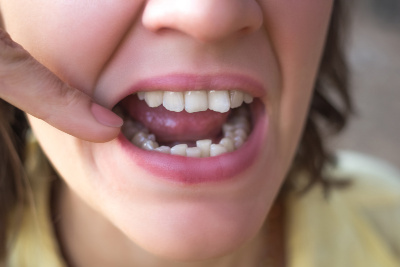Understanding Crooked Bottom Teeth: Causes and Solutions
Tue, May 7th, 2024
Crooked teeth can be a source of insecurity for many individuals, affecting not only their appearance but also their oral health. While it may seem common for bottom teeth to be more prone to misalignment compared to top teeth, understanding the reasons behind this phenomenon is essential. In this blog post, we'll delve into the causes of crooked bottom teeth and explore the various treatment options available to fix them.
Why are Bottom Teeth More Prone to Misalignment?
Genetics: Genetics plays a significant role in determining the alignment of our teeth. If your parents had crooked bottom teeth, you may be predisposed to the same condition. Certain genetic factors can influence the size and shape of the jawbone, which in turn affects tooth alignment.
Limited Space: The lower jaw often has less space compared to the upper jaw, leading to overcrowding and misalignment of the bottom teeth. This lack of space can cause teeth to shift or become crooked over time, especially as wisdom teeth emerge.
Tongue Pressure: The tongue exerts constant pressure on the bottom teeth, particularly during swallowing and speaking. If this pressure is not evenly distributed, it can gradually push the teeth out of alignment, leading to crookedness.
Early Childhood Habits: Habits such as thumb sucking or prolonged pacifier use during childhood can affect the development of the jawbone and the alignment of teeth. These habits can create imbalances in the oral structures, contributing to crooked bottom teeth.
What Are Treatment Options for Crooked Bottom Teeth?
Orthodontic Treatment: Orthodontic interventions, such as braces or clear aligners, are highly effective in correcting misaligned teeth. By applying gentle pressure to the teeth, braces gradually move them into the desired position. Clear aligners offer a discreet alternative to traditional braces, making them an attractive option for adults seeking orthodontic treatment.
Dental Bonding: For minor cases of crookedness, dental bonding can be a quick and cost-effective solution. During the bonding process, a tooth-colored composite resin is applied to the surface of the teeth and sculpted to improve their appearance. While bonding does not address underlying alignment issues, it can significantly enhance the aesthetics of crooked bottom teeth.
Porcelain Veneers: Porcelain veneers are thin shells that are custom-made to cover the front surface of the teeth. They can be used to correct the appearance of crooked teeth, providing a straighter and more uniform smile. Veneers are a versatile option for addressing various cosmetic concerns, including minor misalignment.
Tooth Extraction and Replacement: In cases of severe overcrowding or misalignment, tooth extraction may be necessary to create space for the remaining teeth to align properly. After extraction, the dentist may recommend replacing the missing tooth with a dental implant, bridge, or partial denture to maintain the integrity of the smile.
Surgical Intervention: In complex cases of malocclusion or skeletal discrepancies, surgical orthodontics may be required to realign the jaws and improve overall facial harmony. Orthognathic surgery, also known as jaw surgery, can correct severe bite issues and significantly enhance both the function and aesthetics of the smile.
Crooked bottom teeth can impact both the appearance and function of your smile, but effective treatment options are available to address this common concern. Whether you opt for orthodontic treatment, cosmetic dentistry, or a combination of both, consulting with a qualified dentist or orthodontist is the first step toward achieving a straighter, more confident smile. Don't let crooked teeth hold you back—take control of your oral health and embrace the smile you deserve.
Contact Arnold Dentistry for all of your dental needs including misaligned teeth.






